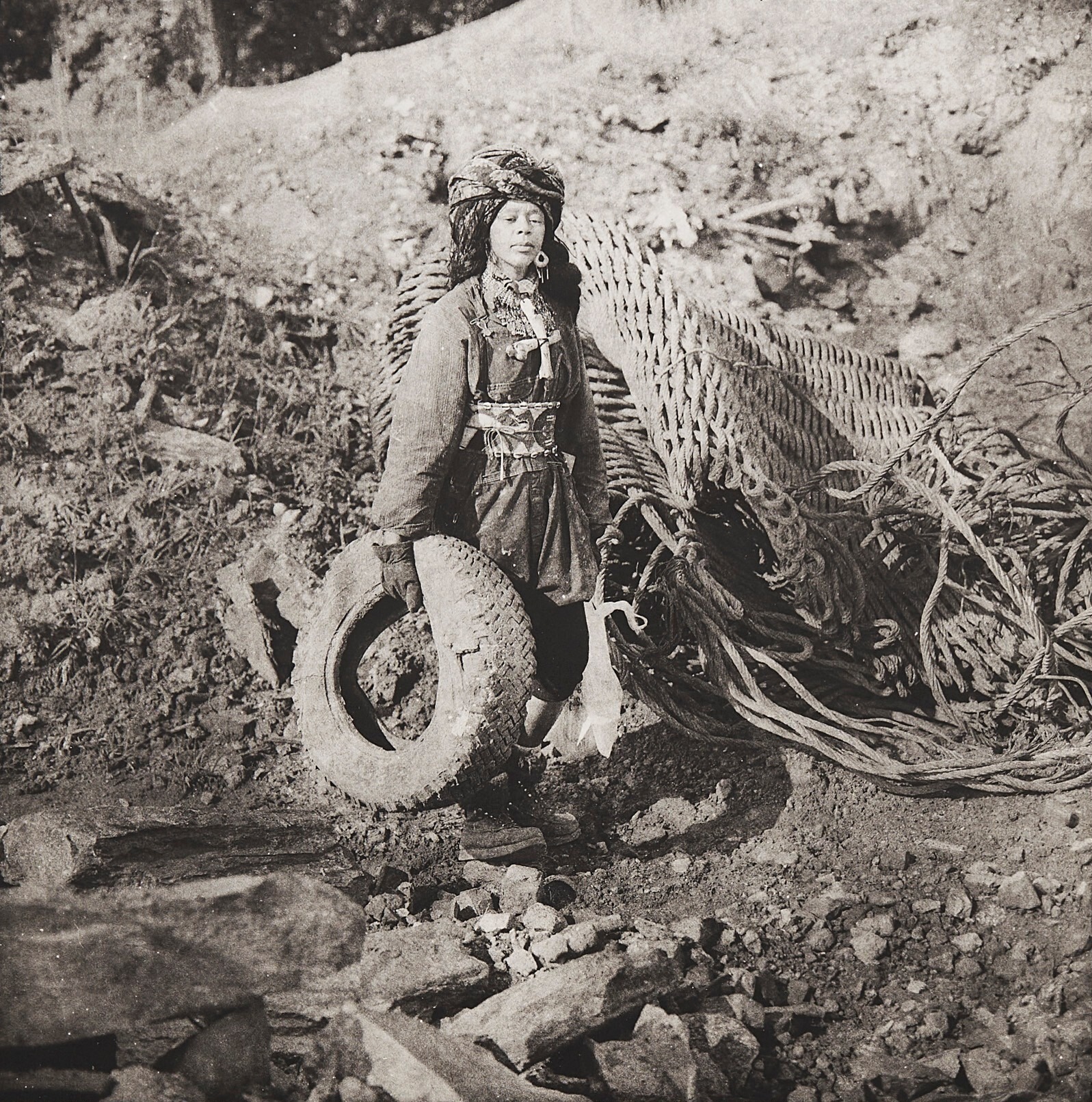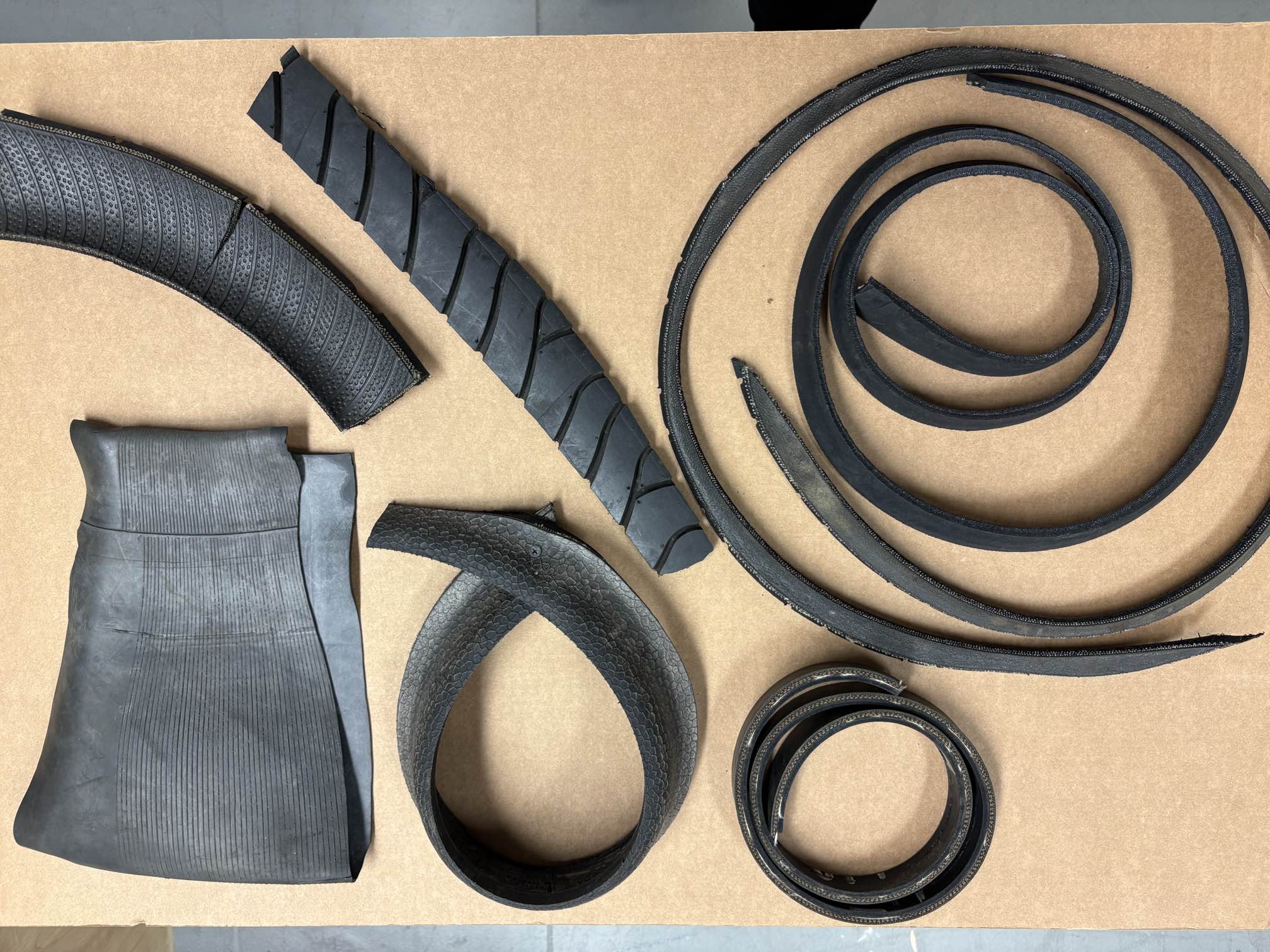The artist Chakaia Booker coils, carves, and contorts discarded tires to create visual splendor. Tires first inspired her on her walks through New York City during the 1980s. As she encountered them, burning and abandoned from frequent car fires, she was struck by their imaginative possibilities. They gradually became her material of choice.
Through her use of salvaged tires, Booker’s work responds to environmental contamination, in part by keeping used tires out of landfills. But as new research emerges about tire wear and landfill pollution, her work takes on new layers of meaning.

In the Foundling Warrior Quest series, the artist dramatizes the process of scavenging tires and other materials. Booker depicts herself as a mythical being foraging in a harsh, industrial landscape.
Chakaia Booker, Foundling Warrior Quest (II 21C), 2010, set of 6 lithography and photogravure on paper, Courtesy Artist Chakaia Booker & David Nolan Gallery. Copyright: © Chakaia Booker. Image courtesy David Nolan Gallery, New York, and Galerie Isabella Bortolozzi, Berlin.
When Rubber Hits the Road
When Booker first incorporated tires into her work, they represented visible pollution: stark reminders of urban detritus and waste. But they also release an invisible residue into the air, a form of pollution we rarely notice.
When a car moves, friction against road surfaces causes tires to shed tiny particulates. By mass, tire wear produces 2,000 times more pollution than tailpipe exhaust. Tiny particles travel through the air while larger particles are washed away in runoff. These microplastic particles contain neurotoxic and carcinogenic compounds that directly endanger the health of both humans and water wildlife.
Salvage and Reuse
“I have heard that tires can last up to 2,000 years,” Booker told Sculpture Magazine in 2003. Their longevity makes them both an exceptionally durable art material and an enduring threat to the environment.
Old tires might be burned, buried, or simply sent to landfills. When burned, tires release toxic chemicals as fumes; when they are buried, the same chemicals leach into soil and groundwater. In landfills, tires can collect methane gas in their cavities, leading to dangerous fires. That’s why many states require that they be shredded into chips.

Visitors can touch cut tire samples when they see In the Tower: Chakaia Booker
Interestingly, Booker’s artistic process echoes this disposal method. She tears, cuts, and transforms the rubber. Through salvage and reuse, Booker prevents tires from ending up in landfills. Discussing Acid Rain, she explains that “old, worn-out tires that are recycled symbolize opposing energies that are being resolved into new works of beauty.”
While not everyone can make tires into monumental sculptures as Booker does, recent research has uncovered new sustainable solutions. Tire materials are being repurposed in rain gardens, roadways, construction materials, and cement manufacturing, giving them new life.

Chakaia Booker, It's So Hard to Be Green, 2000, rubber tires and wood, Courtesy Artist Chakaia Booker & David Nolan Gallery. Copyright: © Chakaia Booker.
Making the Invisible Visible
In the presentation of Booker's works in the East Building Tower, we are confronted by tire sculptures that rise above us, surrounding us on three sides. The immersive experience makes visible the ubiquity of tires in our daily lives.
As Booker herself states, "My intention is to translate materials into imagery that will stimulate people to consider themselves as a part of their environment, as one piece of a larger whole." Through her monumental sculptures, she invites us to contemplate our relationship with manufactured objects and their lasting impact on our world.
Discover more
Top image: Chakaia Booker, Acid Rain, 2001, rubber tires and wood, Courtesy of National Museum of Women in the Arts. © Chakaia Booker
